The Cold War
Defence and deterrence

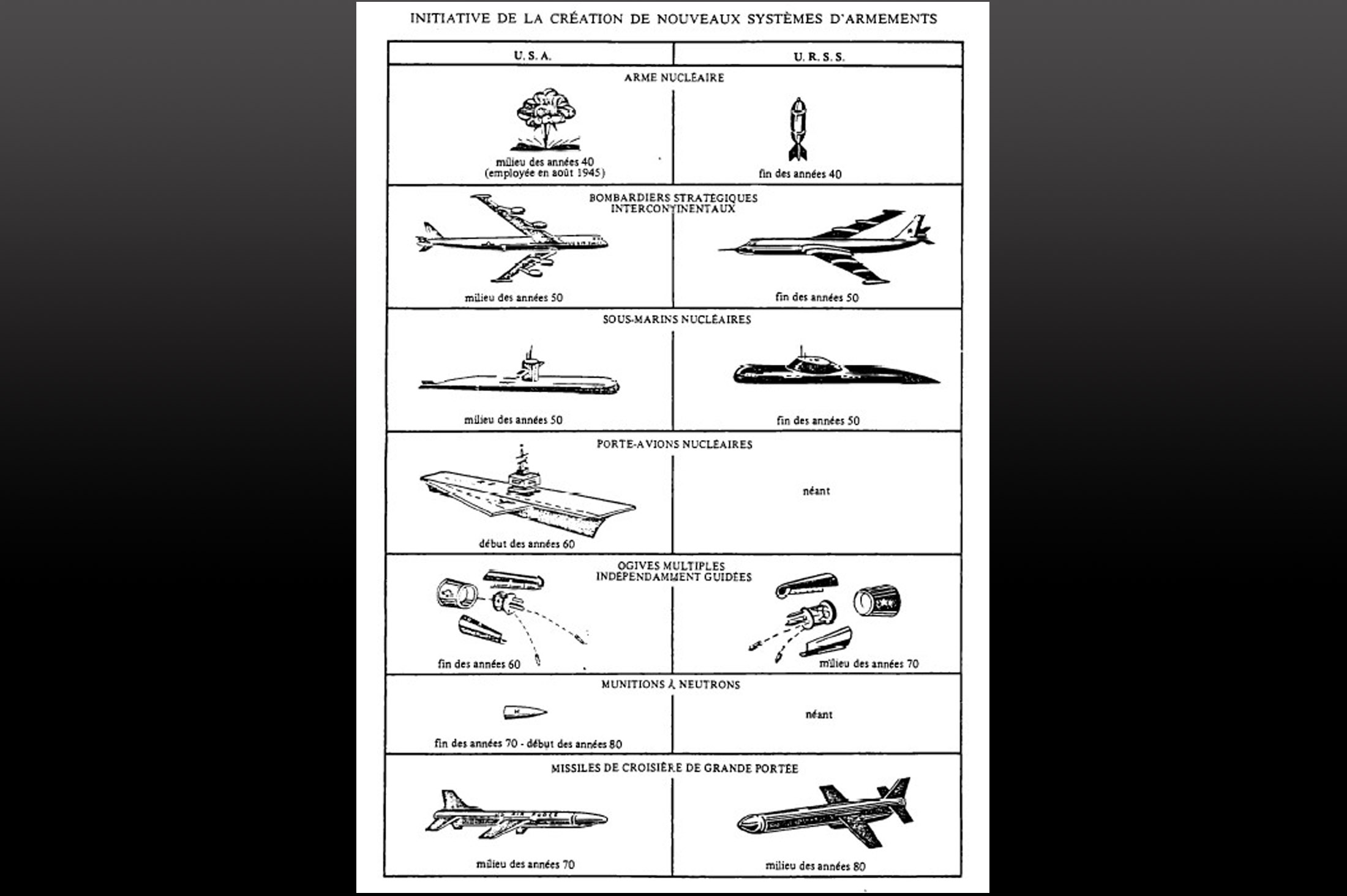
Creation of new weapons systems
A comparison of American and Soviet weapons technology during the Cold War.
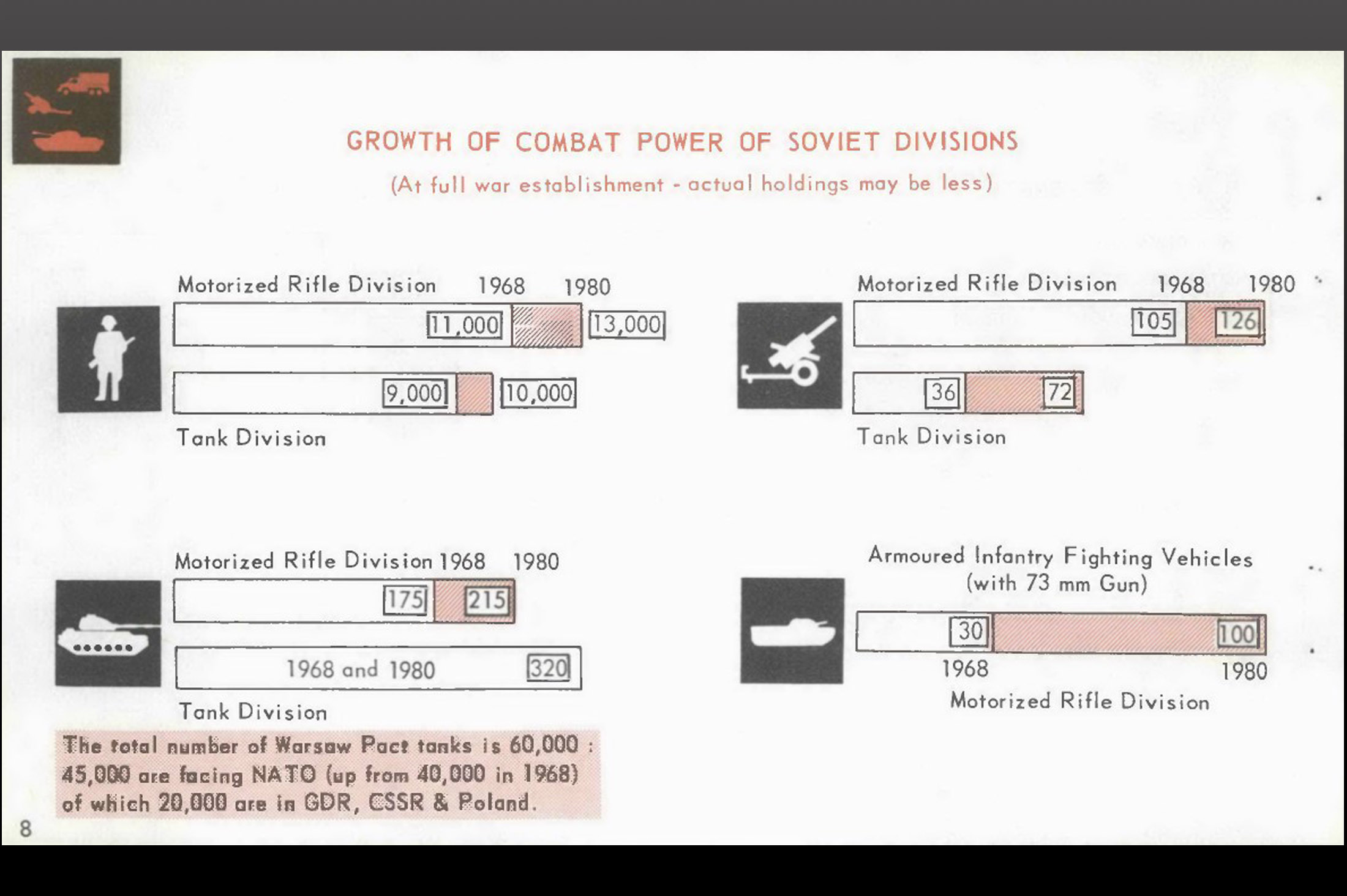
Growth of combat power of Soviet divisions
The growth of Soviet military divisions between 1968 and 1980.
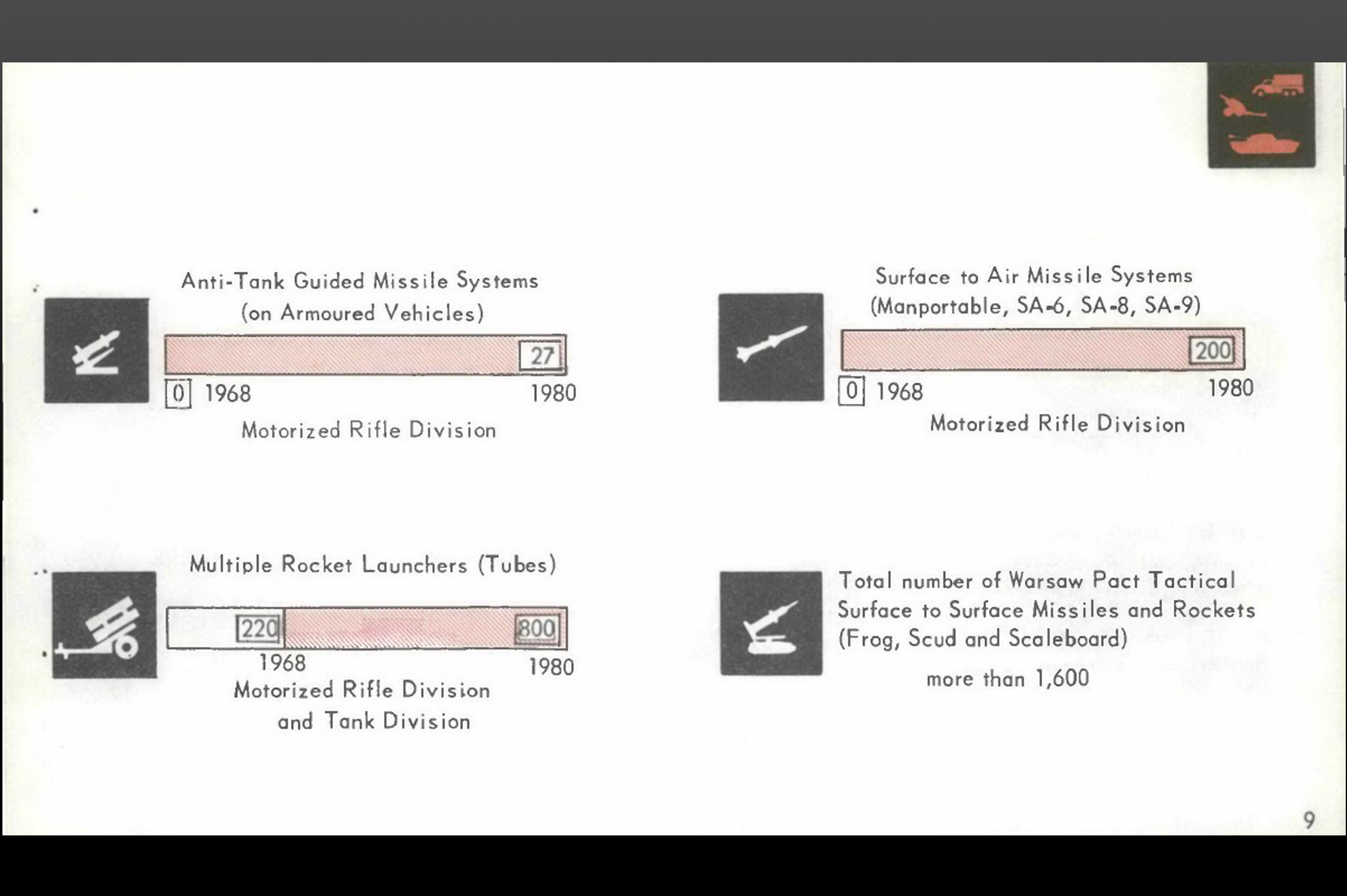
Growth of combat power of Soviet divisions
The growth of Soviet military divisions between 1968 and 1980.
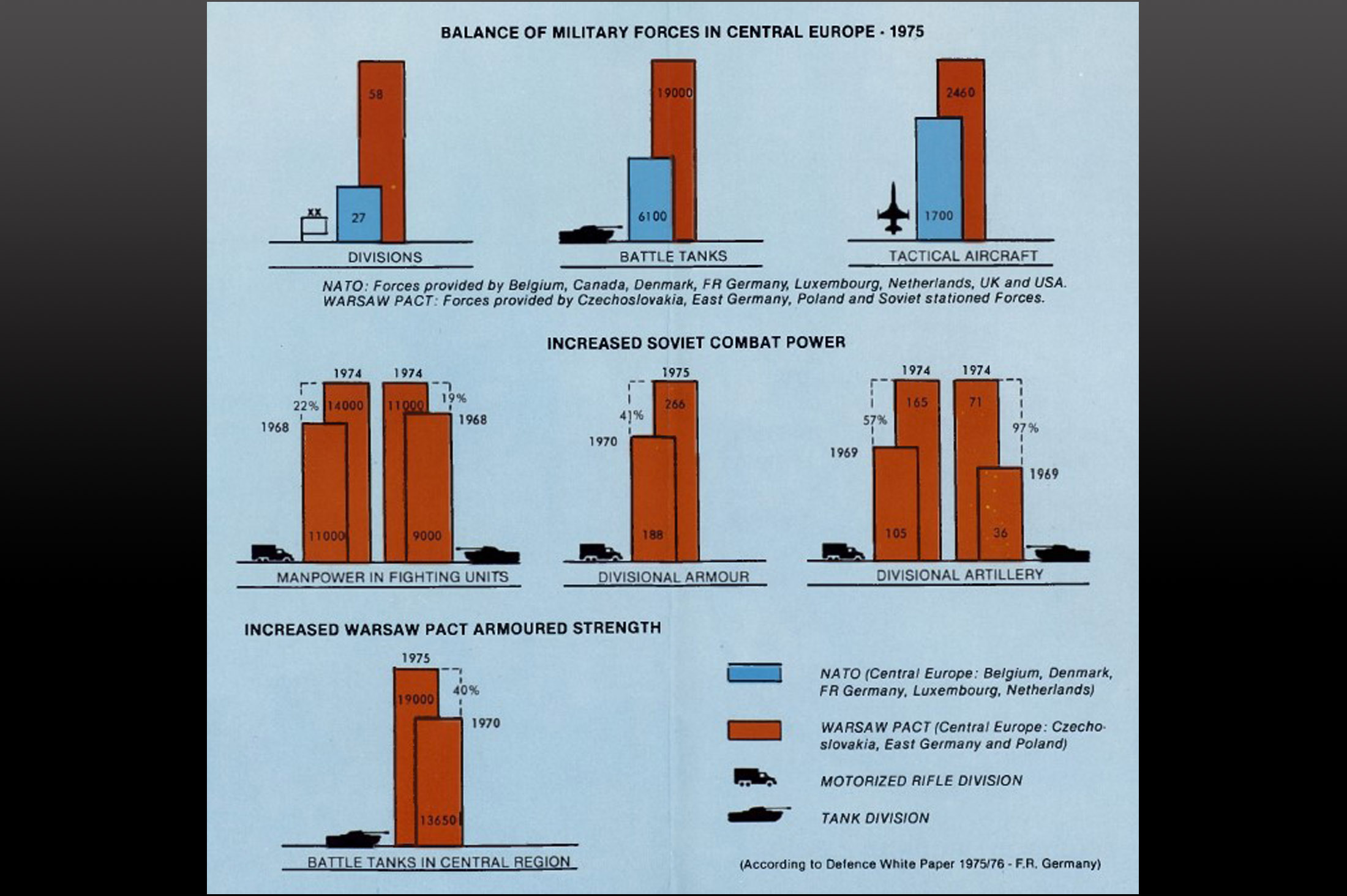
Balance of military forces in Central Europe - 1975
In 1975 the Warsaw Pact had considerable numerical superiority over the NATO forces deployed in Central Europe.
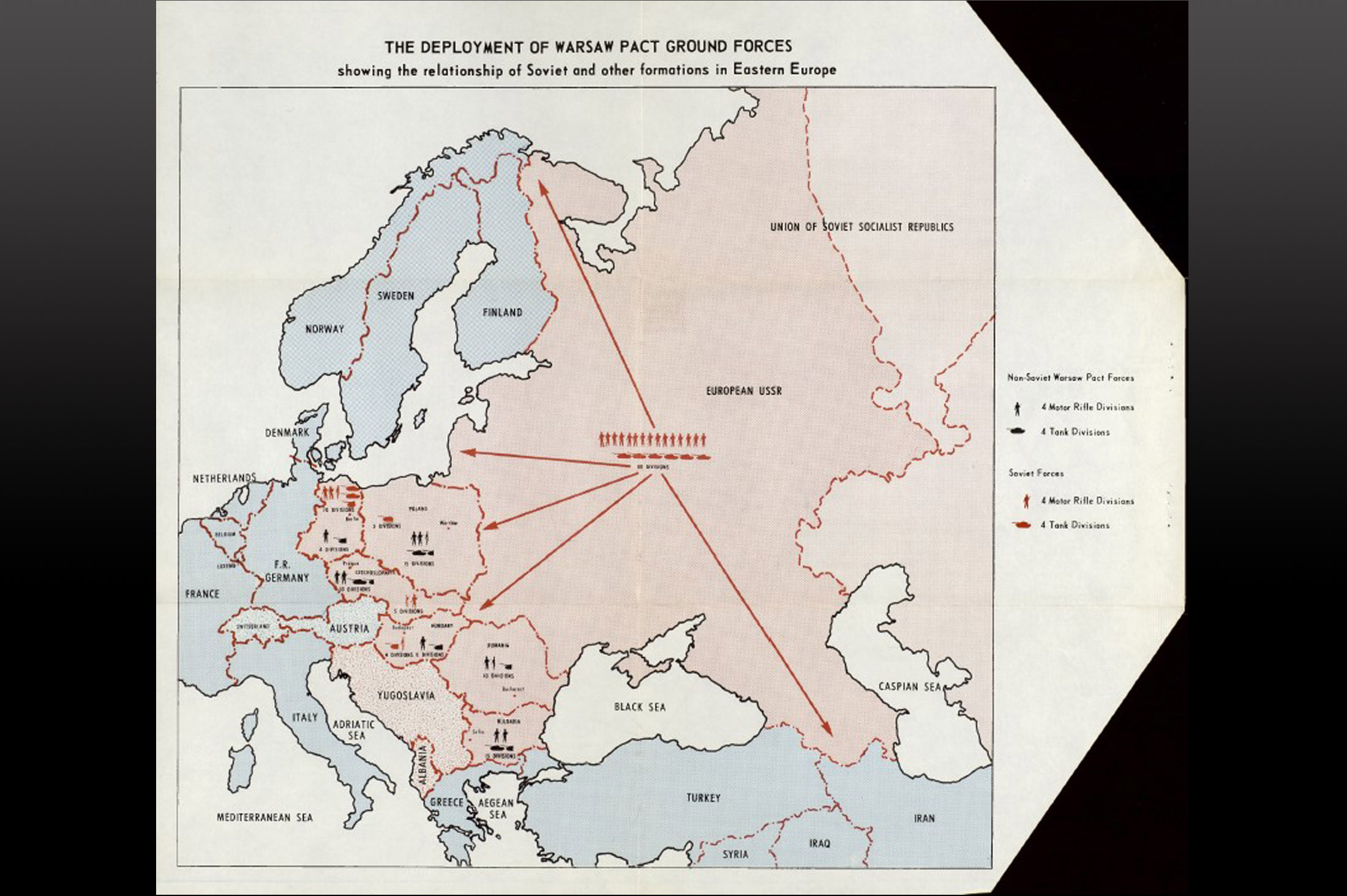
The deployment of Warsaw Pact ground forces
A map indicating where Soviet and non-Soviet Warsaw Pact forces were deployed in 1980.
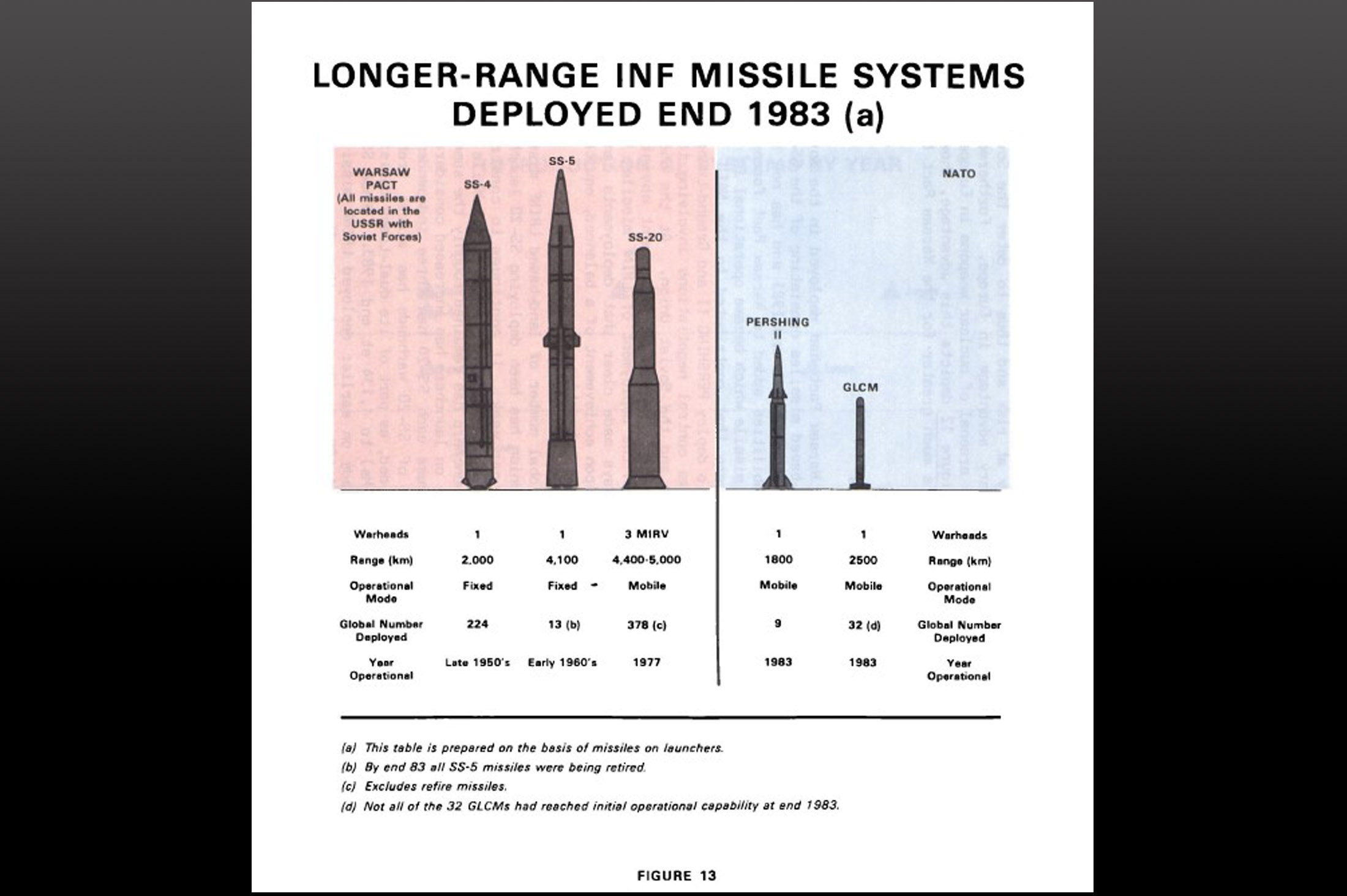
Longer-range INF missile systems deployed end 1983
A comparison of NATO's Pershing II and ground launched cruise missiles (GLCM) to the Warsaw Pact's SS-4, SS-5 and SS-20 missiles.
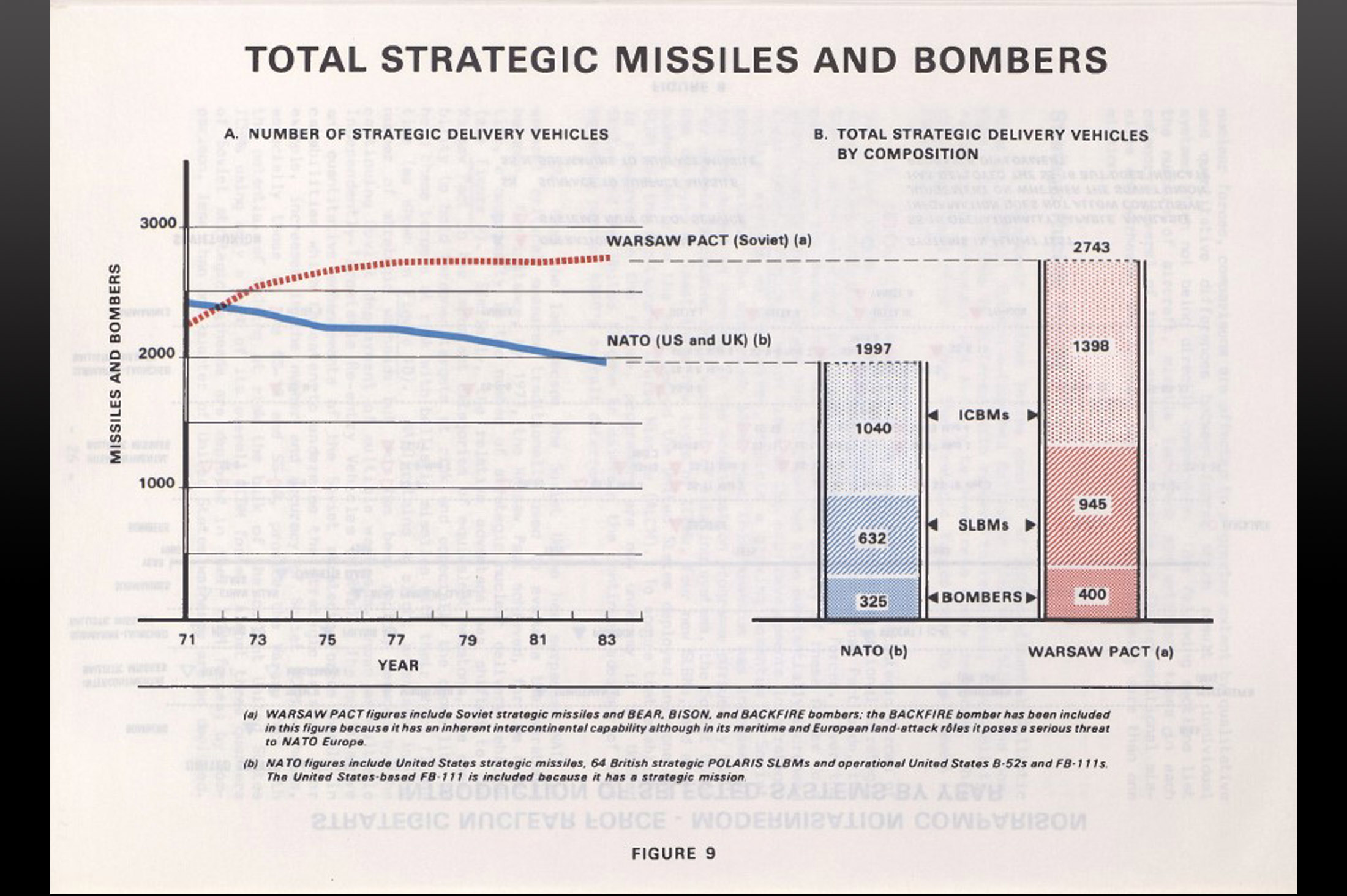
Total strategic missiles and bombers
Between 1971 and 1983, the Soviet Union surpassed NATO in several critical measures traditionally used to evaluate the strategic balance.
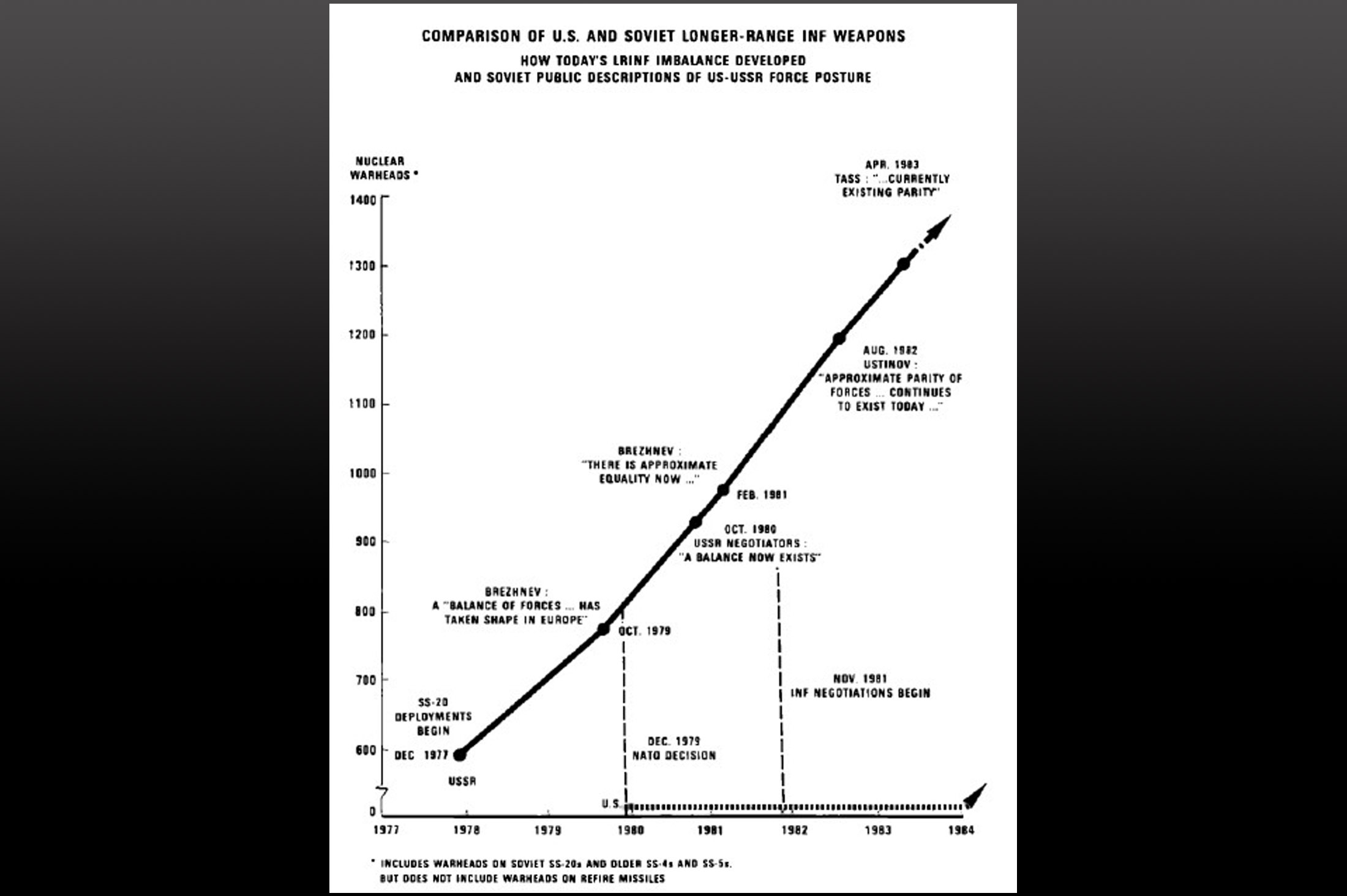
Comparison of US and Soviet longer-range INF weapons
The increase in nuclear warheads from 1977 to 1984 contrasted with statements from Soviet officials.

NATO-Warsaw Pact force comparison
The imbalance of land forces favoured the Warsaw Pact in 1984.

Coverage of Europe from SS-20 bases east of the Urals
Even from sites far east, Soviet SS-20 missiles could strike substantial parts of NATO Europe.
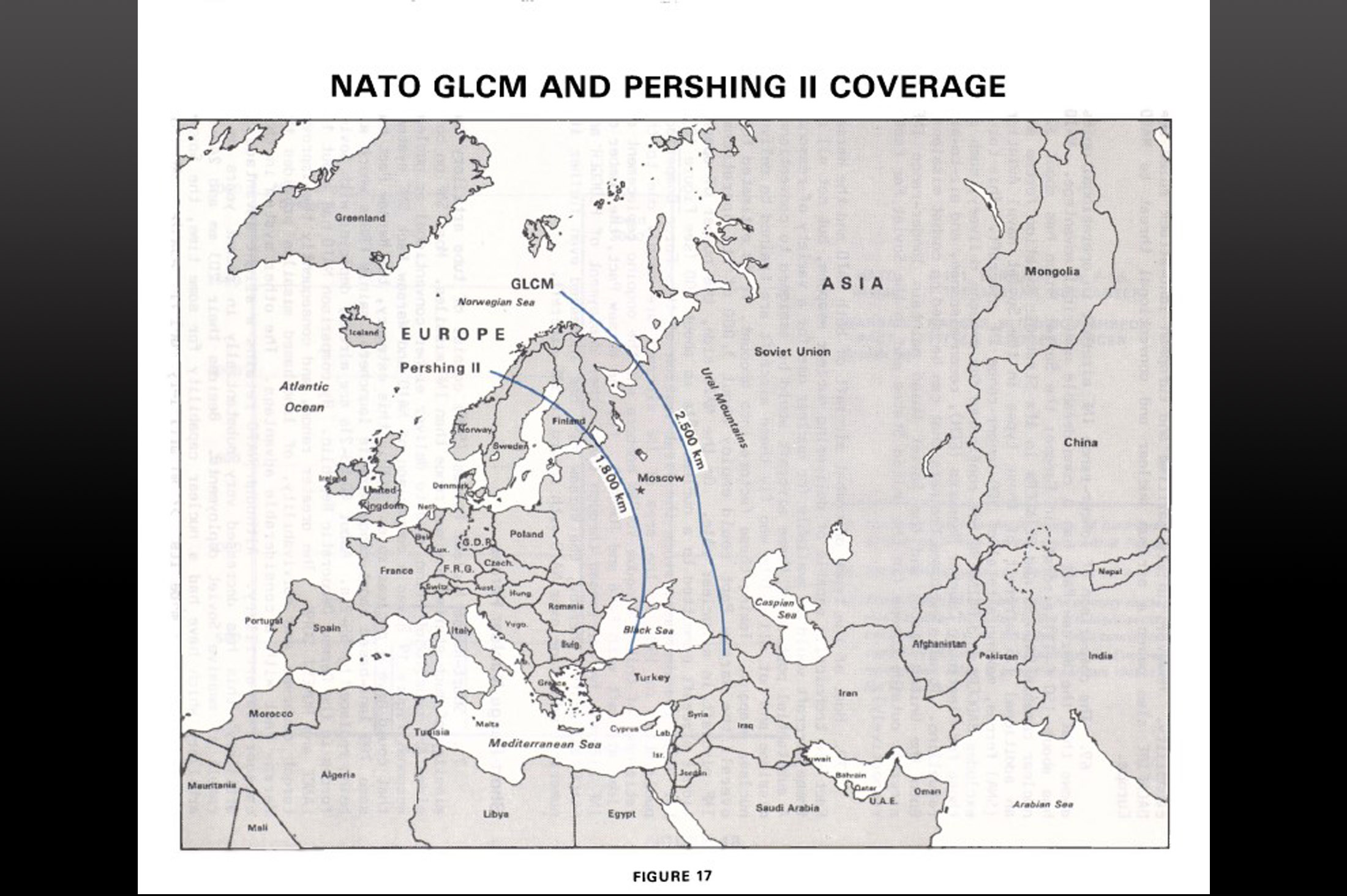
NATO GLCM and Pershing II coverage
As most of the Soviet intercontinental ballistic missile silos were beyond the reach of NATO's Pershing II and ground launched cruise missiles (GLCM), these longer-range intermediate range nuclear forces did not present a disarming first strike threat.
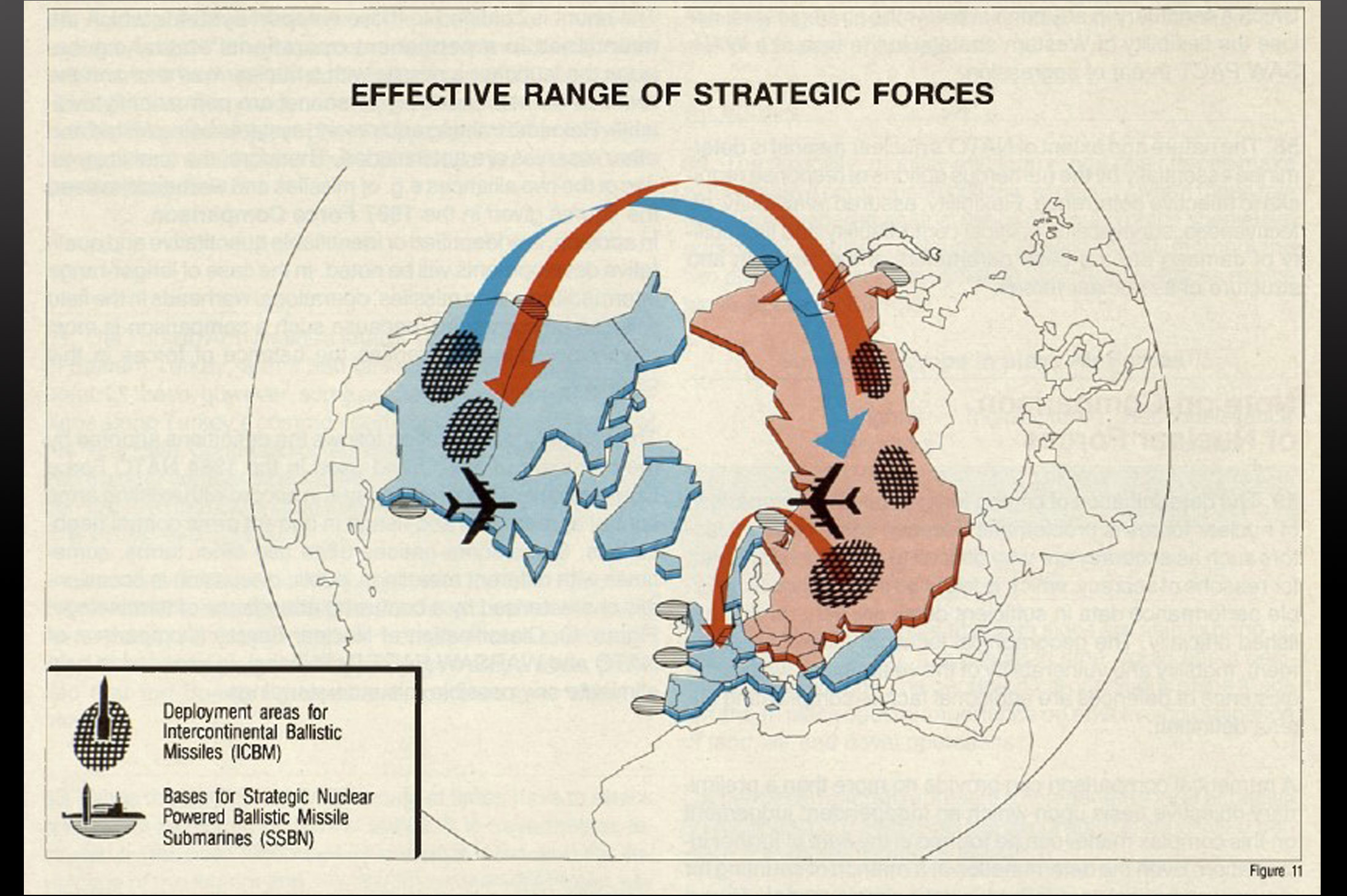
Effective range of strategic forces
Strategic weapons are what Article II of the SALT II Treaty defined as strategic offensive arms which, because of their range in excess of 5,500 km or because of their nature, were suitable for intercontinental use. Examples include land-based intercontinental ballistic missiles (ICBM), submarine-launched ballistic missiles (SLBM), and heavy bombers.
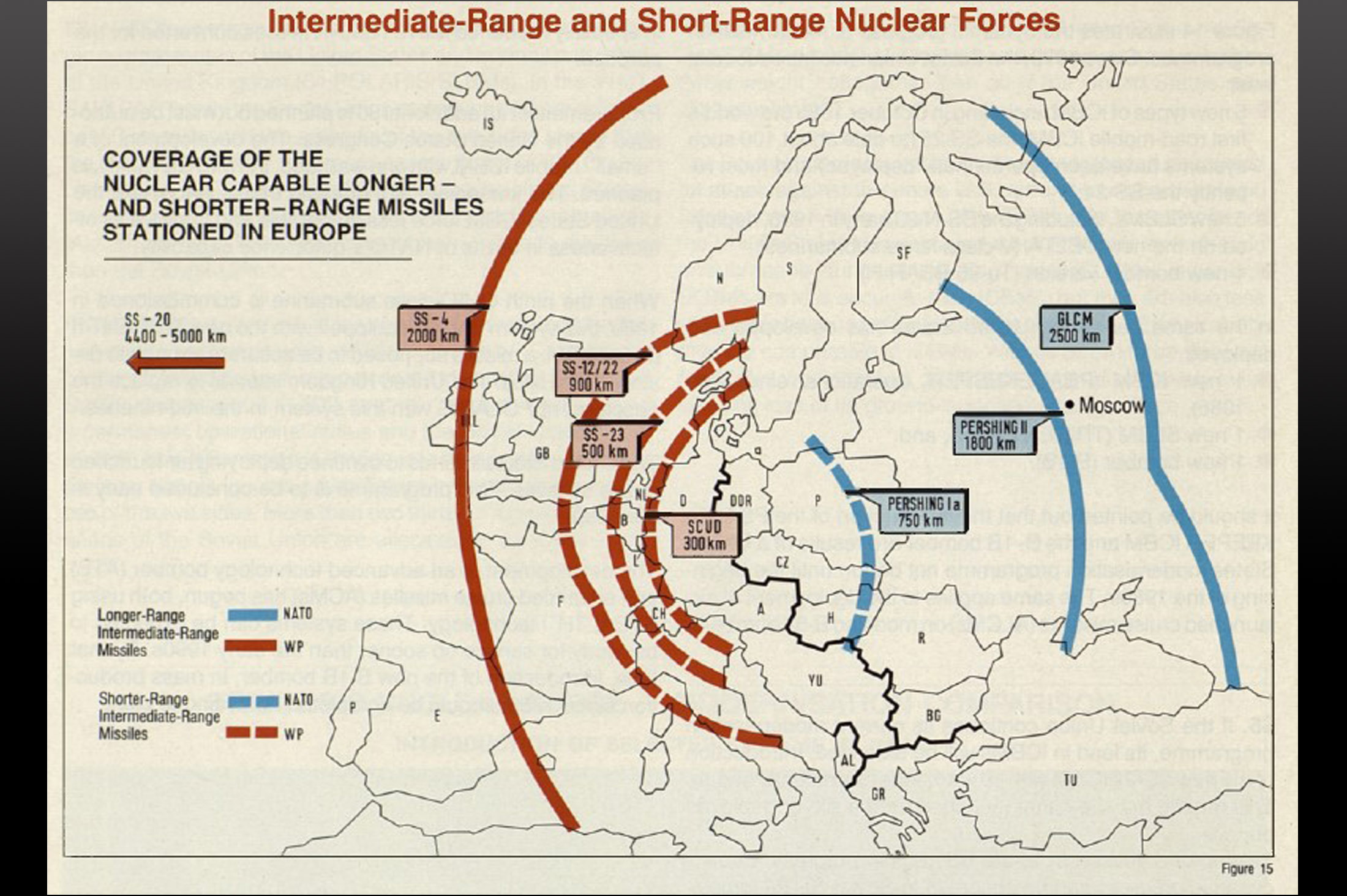
Intermediate-range and short-range nuclear forces
A map indicating the different ranges of NATO and Warsaw Pact missiles stationed throughout Europe as of 1987.
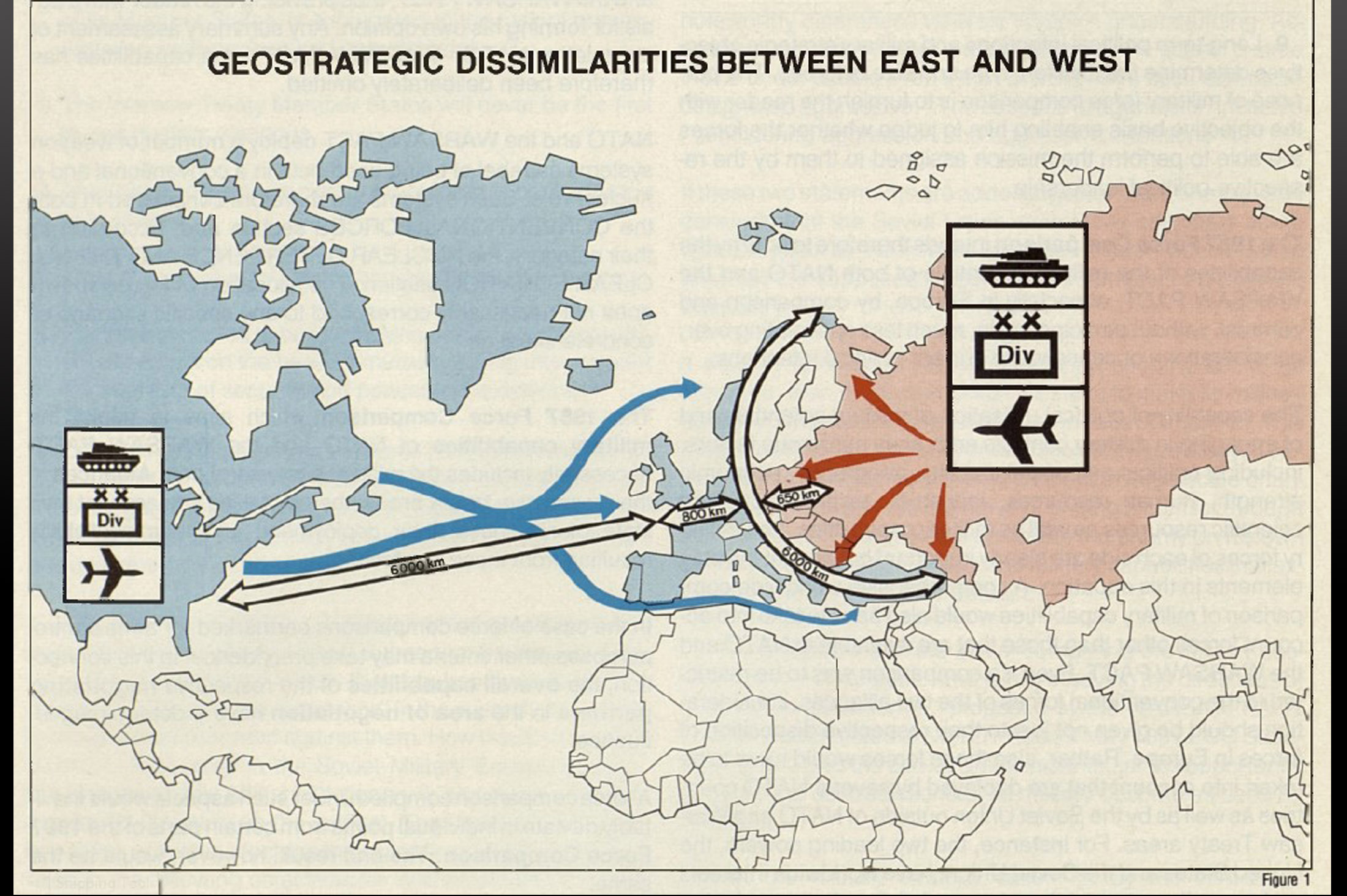
Geostrategic dissimilarities between East and West
In Europe, the Warsaw Pact held the geostrategic advantage of the ''interior line'' which allowed for rapid transfer of land and air forces between different areas via controllable and largely secure lines of communication.
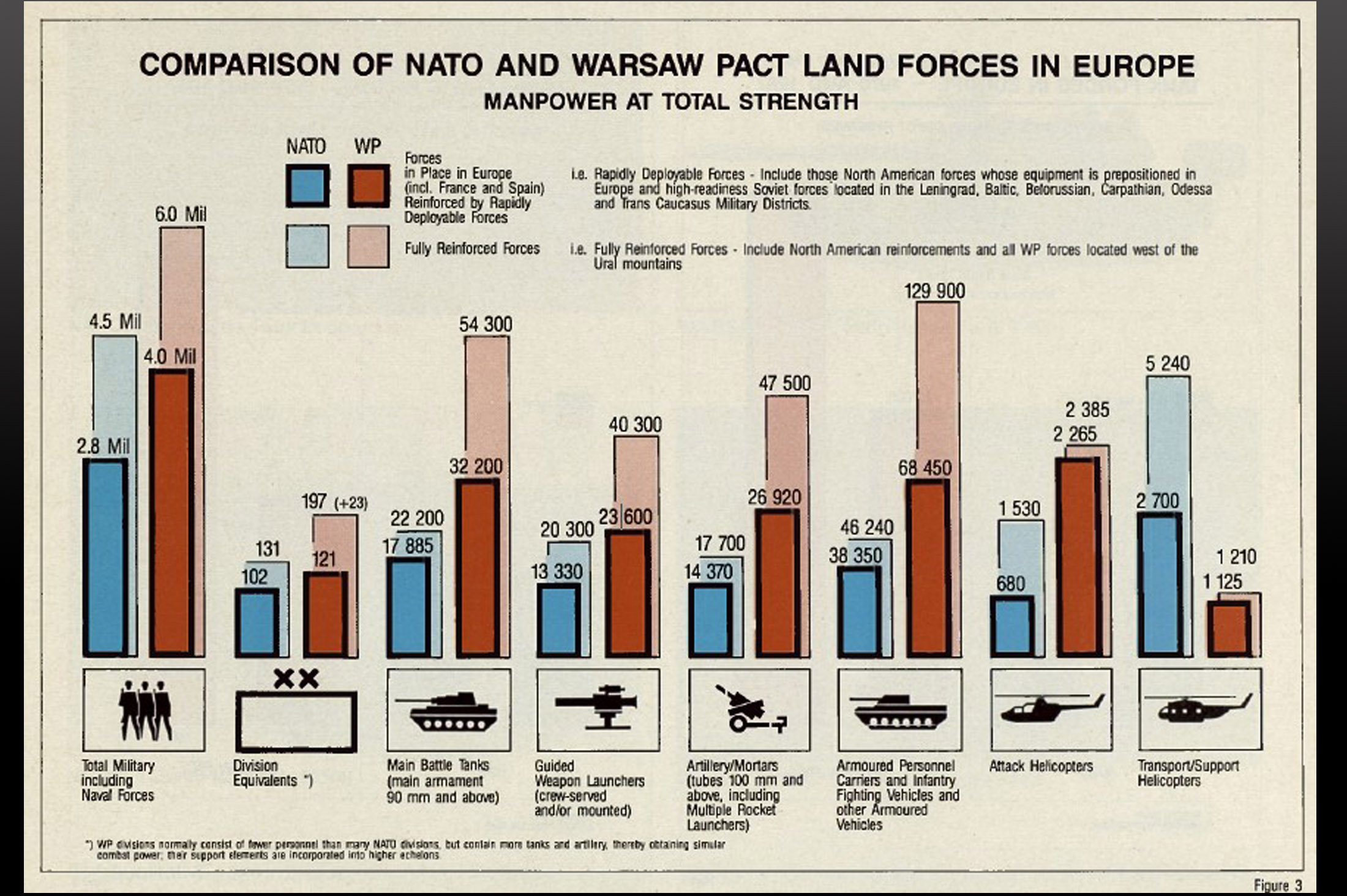
Comparison of NATO and Warsaw Pact land forces in Europe
The Warsaw Pact could mobilise more reserves, move them forward, and commit them time-staggered in line with its echelon system, an advantage intensified by its geostrategically favourable position.
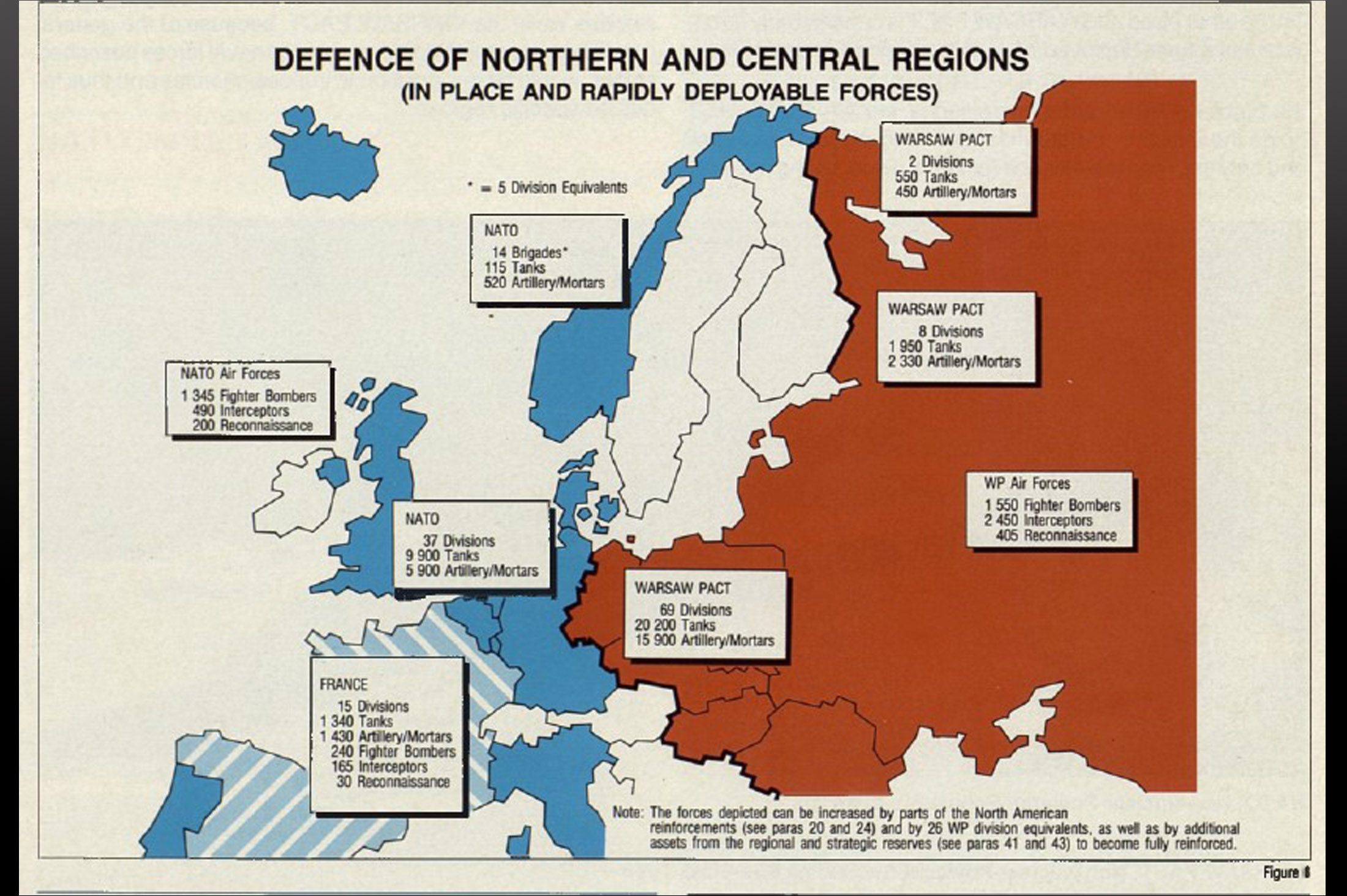
Defence of northern and central regions
The deployment and strength of forces as of 1987.
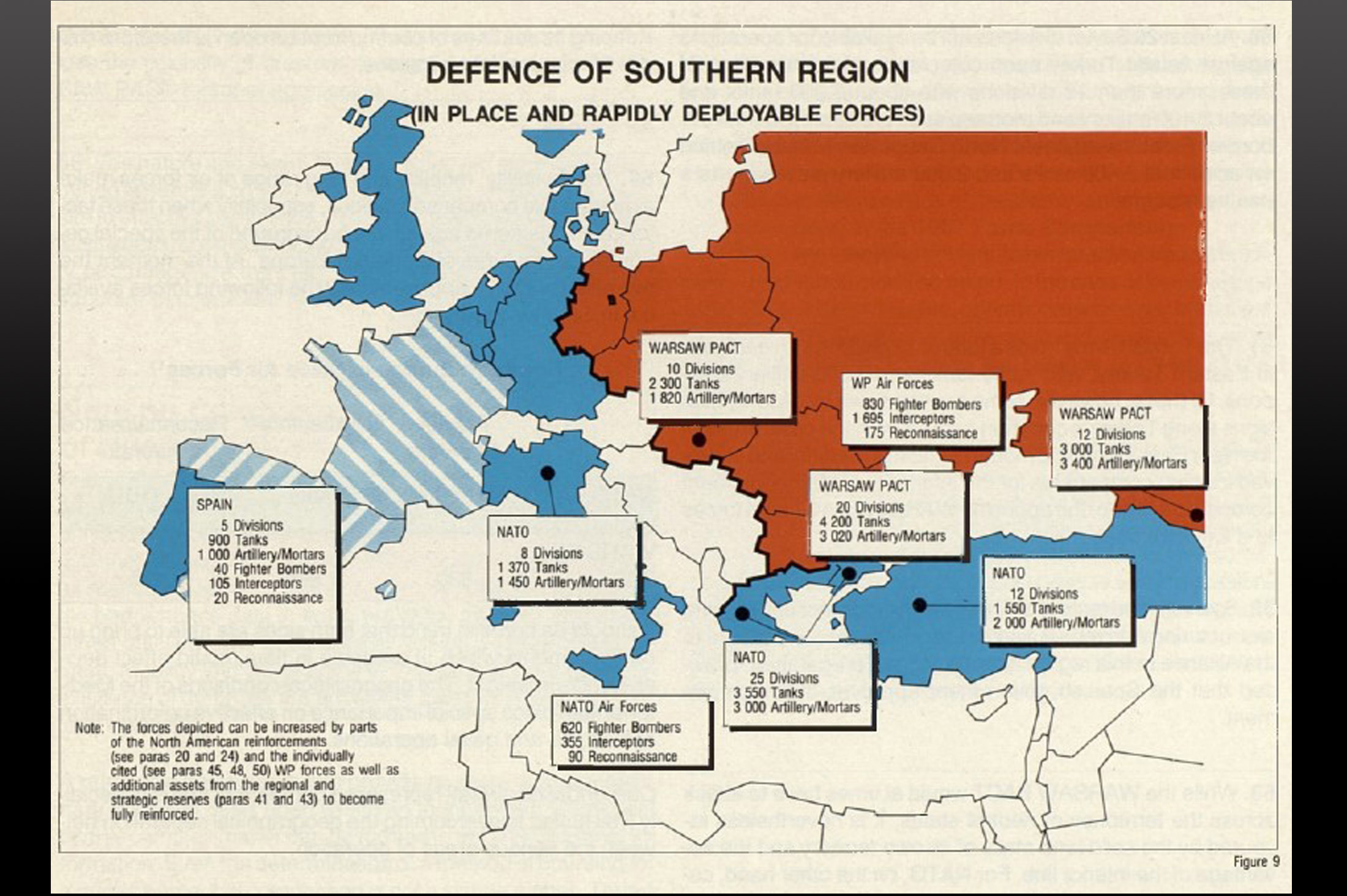
Defence of southern region
The deployment and strength of forces as of 1987.
